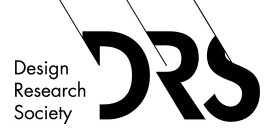contributions
Defining the Value of Educational Equilibrium for Immigrant and At-Risk Youths Through Art Education in the 2020s and Beyond
Abstract
The purpose of this study is to explore the inefficiencies of a one-size-fits-all curricular structure in “Defining the Value of Educational Equilibrium for Immigrant and At-Risk Youths Through Art Education in the 2020s and Beyond in a South Florida Alternative High school”. The subjects were primarily from Haiti and Jamaica. These inefficiencies have no bearing on the scientific study of humans and their behavior. This is a phenomenological study that focuses is on unique learners. Little is known about cultural relevance in learning, especially for unique project-based learners through artistic means such as the visual arts. This paper is a methodological consideration of a specific visual arts teaching approach for global application in the effort of shaping a “world of many centers.” The natural principles of ecology and psychology are in focus, in identifying the construct of the anthropological respectability of indigenous voices globally and clarifying related scientific perception and action. The goal is to replace the old one-size-fits-all colonial- practice to affect the shaping of peripheral design and provide a creative culture friendly learning component that connects comfortably across disciplines and is adaptive to the teaching of science, technology, engineering, and mathematics. The findings will address the unique responsiveness of learners by their aptitude. They point to the theoretical respect of a cross-cultural paradigm that pinpoints the need for a unique socio-political model for non-European learners. The study aims to establish a collective societal opportunistic premise that will help to carve out a respectful multiverse principle for tomorrow without bias. The study seeks to define the global reality in which diversity, ethnicity, racial orientation, religious and sexual convictions, and social interest allow learners to be themselves within the scope of their uniqueness without sociopolitical hindrance.
Art-education, multiverse-pluriverse, cultural-identification, ethnomathematics.
About the Author(s)
Dr Clovis B. Nelson is a Jamaican humanitarian and human rights activist from a small hilly community called Frank-field, in the parish of Clarendon in rural Jamaica. He is the first of his peers from that region of the country to have achieved Doctoral level status in education. He is a fine art sculptor and special effects 2 artist who has worked on several feature films in the early 80s through to 2001 such as, “The Mighty Quinn”, “Lord of The Flies”, “The Lunatic”, “Popcorn”, and “Cool Runnings” to name a few.
Dr, Nelson is an art educator, a guru, who indulges in the development of differentiated levels of learning through the arts-multiple intelligence understanding for purposeful educational pursuit. He strongly believes that there is an undeniable parallel between anthropology—cultural environmental, and experience conditioning that are conjoined entities integral in shaping comprehensive learning for some unique learners. He doesn’t support the “one size fits all” practice and has coined the term “culturecentered pedagogy in education”, for future study and has done some publications on his areas of interest in the field.
He is formally of “The Edna Manley College for the Visual and Performing Arts in Kingston Jamaica, The University of Massachusetts Dartmouth, Nova Southeastern University in Florida, and a member of the Harvard University Think Tank on global education in 2015. His childhood experience with dyslexia had helped to shape his work in creative education consultancy as he focus his attention to, education policy design, at-risk youth initiative planning, and creative curriculum development. He has written on the STEM educational concept application initiative that is applicable across the Caribbean Diaspora and beyond. He writes and sings Reggae and is getting ready to publish an anthology of poems early next year.


